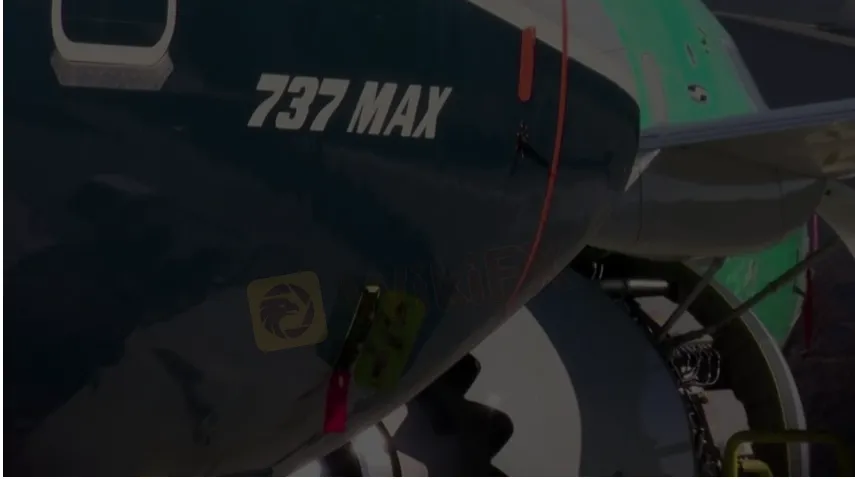简体中文
繁體中文
English
Pусский
日本語
ภาษาไทย
Tiếng Việt
Bahasa Indonesia
Español
हिन्दी
Filippiiniläinen
Français
Deutsch
Português
Türkçe
한국어
العربية
Boeing's 737 crisis deepens as production stops for first time in two decades
Abstract:Boeing Co said on December 16 it would suspend production of its best-selling 737 MAX jetliner in January, its biggest assembly-line halt in more than 20 years, as fallout from two fatal crashes of the now-grounded aircraft drags into 2020.
Boeing Co said on December 16 it would suspend production of its best-selling 737 MAX jetliner in January, its biggest assembly-line halt in more than 20 years, as fallout from two fatal crashes of the now-grounded aircraft drags into 2020.

Boeing, which builds the 737 south of Seattle, said it would not lay off any of the roughly 12,000 employees there during the production freeze, though the move could have repercussions across its global supply chain and the U.S. economy.
The decision at a two-day board meeting came after the Federal Aviation Administration (FAA) refused to approve the jet‘s return to service before 2020 and delivered what was seen as a public rebuff to Boeing’s hopes of moving faster.
The 737 MAX has been grounded since March after two crashes in Indonesia and Ethiopia killed 346 people within five months, costing the plane manufacturer more than $9 billion so far.
The decision to halt production will have little immediate impact on airlines that have already seen deliveries halted, forcing many to cancel flights or lease older replacements.
But it marks a deepening of a crisis that has already seen Boeings fastest-selling jet grounded worldwide, its safety record scrutinized, customers pressing for compensation and its cornerstone relationship with the FAA placed under strain.
It also threatens to hit U.S. economy, with House representative Rick Larsen calling Boeing‘s decision “a body blow to its workers and the region’s economy.”
“The only saving grace is the Boeing leadership has promised not to lay off any workers. I am ready to work with Boeing workers to ensure ... they will have access to the necessary resources in the event of a prolonged shutdown.”
Until now Boeing has continued to produce 737 MAX jets at a rate of 42 per month and purchase parts from suppliers at a rate of up to 52 units per month, even though deliveries are frozen until regulators approve the aircraft to fly commercially again.
Boeing did not say how long the shutdown might last, stressing this was up to the FAA. Previous efforts to predict when the 737 MAX might return to service after software training changes had drawn a sharp response from the U.S. regulator.

The FAA said it would not comment on what it described as a Boeing business decision but would continue to work with global regulators to review proposed changes to the 737 MAX.
“Our first priority is safety, and we have set no timeframe for when the work will be completed,” the agency said.
Analysts said the shutdown was inevitable after Boeing was forced to abandon its end-year goal for returning to service.
“It is not a surprise that they don‘t continue producing planes that don’t have a home,” said Adam Pilarski, senior vice president at Virginia-based consultancy AVITAS.
Disclaimer:
The views in this article only represent the author's personal views, and do not constitute investment advice on this platform. This platform does not guarantee the accuracy, completeness and timeliness of the information in the article, and will not be liable for any loss caused by the use of or reliance on the information in the article.
WikiFX Broker
Latest News
ASIC Sues Binance Australia Derivatives for Misclassifying Retail Clients
WikiFX Review: Is FxPro Reliable?
Malaysian-Thai Fraud Syndicate Dismantled, Millions in Losses Reported
Trading frauds topped the list of scams in India- Report Reveals
AIMS Broker Review
The Hidden Checklist: Five Unconventional Steps to Vet Your Broker
YAMARKETS' Jingle Bells Christmas Offer!
Revolut Leads UK Neobanks in the Digital Banking Revolution
Fusion Markets: Safe Choice or Scam to Avoid?
SEC Approves Hashdex and Franklin Crypto ETFs on Nasdaq
Currency Calculator


